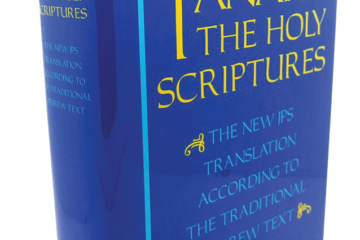Pesach’s corn & beans conundrum
By Rabbi Judy Chessin
Temple Beth Or, and Chair, Synagogue Forum of Dayton

Remember the story of the East Coast rabbi who was invited to serve a Midwestern pulpit? On his very first Shabbat, a fight broke out among congregants who disagreed as to whether they should or should not stand during the Torah reading of The Ten Commandments.
The baffled rabbi went to the founding president of the congregation to find out their original custom. “Mr. Levy,” the rabbi implored. “You must tell me, which is the correct custom for the congregation? When we read The Ten Commandments, the ones standing started screaming at the ones sitting, telling them to stand up; and the ones sitting started screaming at the ones standing up, telling them to sit down!”
And the elderly Mr. Levy answered, “So nu? That is the custom.”
While the story illustrates the passion aroused by congregational dissent, it might also hint at the differences of custom in Jewish observance based on geography. For it was the custom of Sephardic Jews (those who hailed from Spain, Portugal, North Africa and the Middle East) to sit during the reading of The Ten Commandments of the Torah, so as not to imply that any one part of the Torah was more important than another.
Meanwhile, Jews from Ashkenazi countries (France, Germany and Eastern Europe) had the custom of standing during the reading of The Ten Commandments and to sit during all other readings.
A more well-known difference between Ashkenazi and Sephardi traditions regards permissible foods on Passover. Traditionally, Sephardic Jews eat legumes (called kitniyot) while Ashkenazi Jews do not.
The source of the disagreement goes far back into history.
Moses Maimonides, the preeminent Sephardic Jewish philosopher, scholar and legal commentator, taught that the prohibition against chametz (leavened food) on Pesach applies only to five species of grain: wheat, rye, barley, oats, and spelt.
However, kitniyot — rice, corn, peanuts, millet, beans, and lentils — do not become leavened and are therefore permitted. Likewise, Rabbi Joseph Karo, a 16th-century Spanish immigrant to Israel, wrote in the Shulchan Aruch (the “Set Table” code of Jewish law) that eating of kitniyot was allowed on Pesach.
Rabbi Moshe Isserles of Krakow, Poland, on the other hand, was the authority of Jewish law for Ashkenazi Jews. Isserles, also known as the Rema, for his initials, authored the Mapah, or the “Tablecloth,” which covered the “Set Table” of the Sephardic Karo’s Shulchan Aruch.
The Mapah often noted cases where Sephardic and Ashkenazic cases differed. And the Rema forbade the consumption of kitniyot on Passover for all Ashkenazic Jewry.
Why the ban? While it is often answered that kitniyot can look like chametz, this does not solve why legumes only became banned in France and Poland during the 13th century. A more convincing answer might be that this was the very time that European farmers began the practice of crop rotation.
Previously, one in every three grain fields would lie fallow for re-oxygenation. Now, it was discovered that by planting rice, corn, or beans in a grain field once every three years, it reinvigorated the soil without losing a year of  crops.
crops.
Thus, when reaping the legumes of such a field, residual growth of grain was surely mixed in with the harvest. The same bags were used for shipping these crops, and Eastern European Jews found chametz mixed in with their legumes. Thus, imported legumes had to be banned on Passover in Eastern European communities.
In Israel today, Sephardic customs have become the norm. The Israeli population is now quite mixed, and while there are some enclaves of Ashkenazi Jews there, most of Israel has become culturally less European and more Middle Eastern. Here in America however, our Eastern European roots run deep, and there is often strong resistance among even the most liberal Jews to adding kitniyot to a Passover diet.
Other Jews, less attached to bubbie or zaydie’s customs, might instead pick and choose their traditions and observances, and even opt for a vegan or gluten-free diet over Passover.
So, Sant-il-Khadra (Iraqi Jews’ expression for a year of good fortune), A Zisn Pesach (Yiddish for a sweet Pesach), Chag Sameach (Hebrew for Happy Holiday), or Happy Passover — no matter how you say it, observe it, or eat it, may your holiday be blessed.
To read the complete April 2015 Dayton Jewish Observer, click here.





